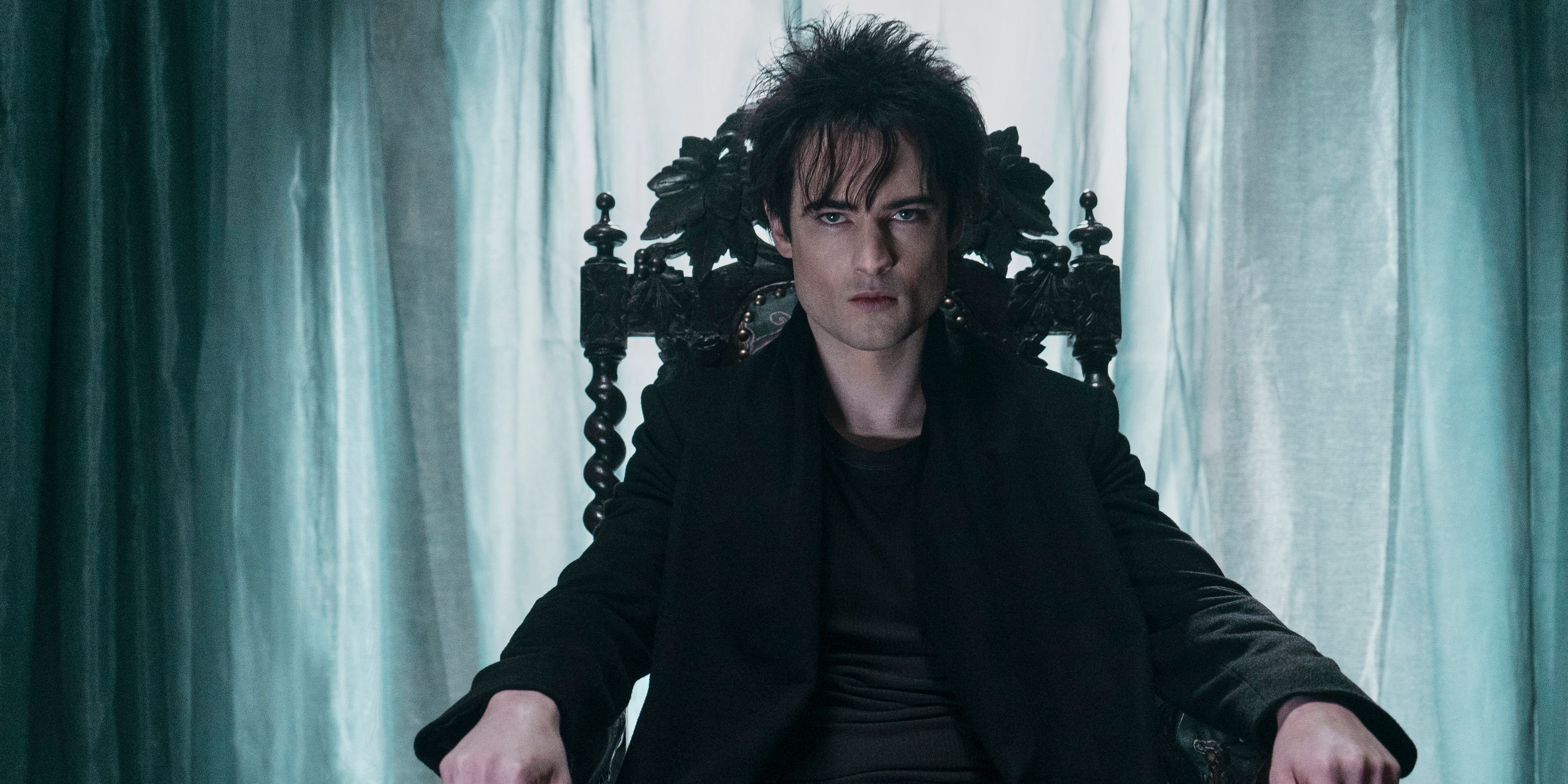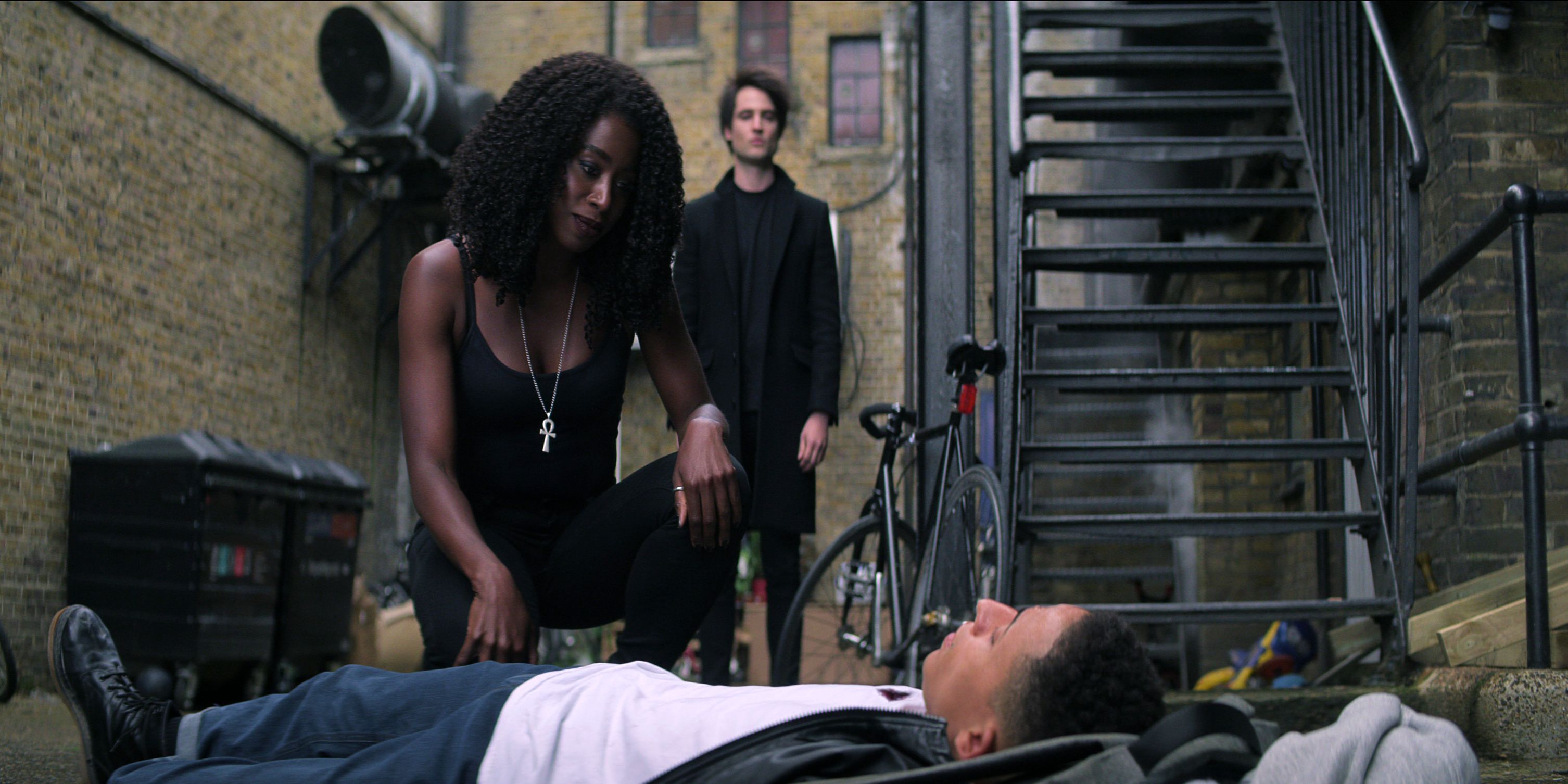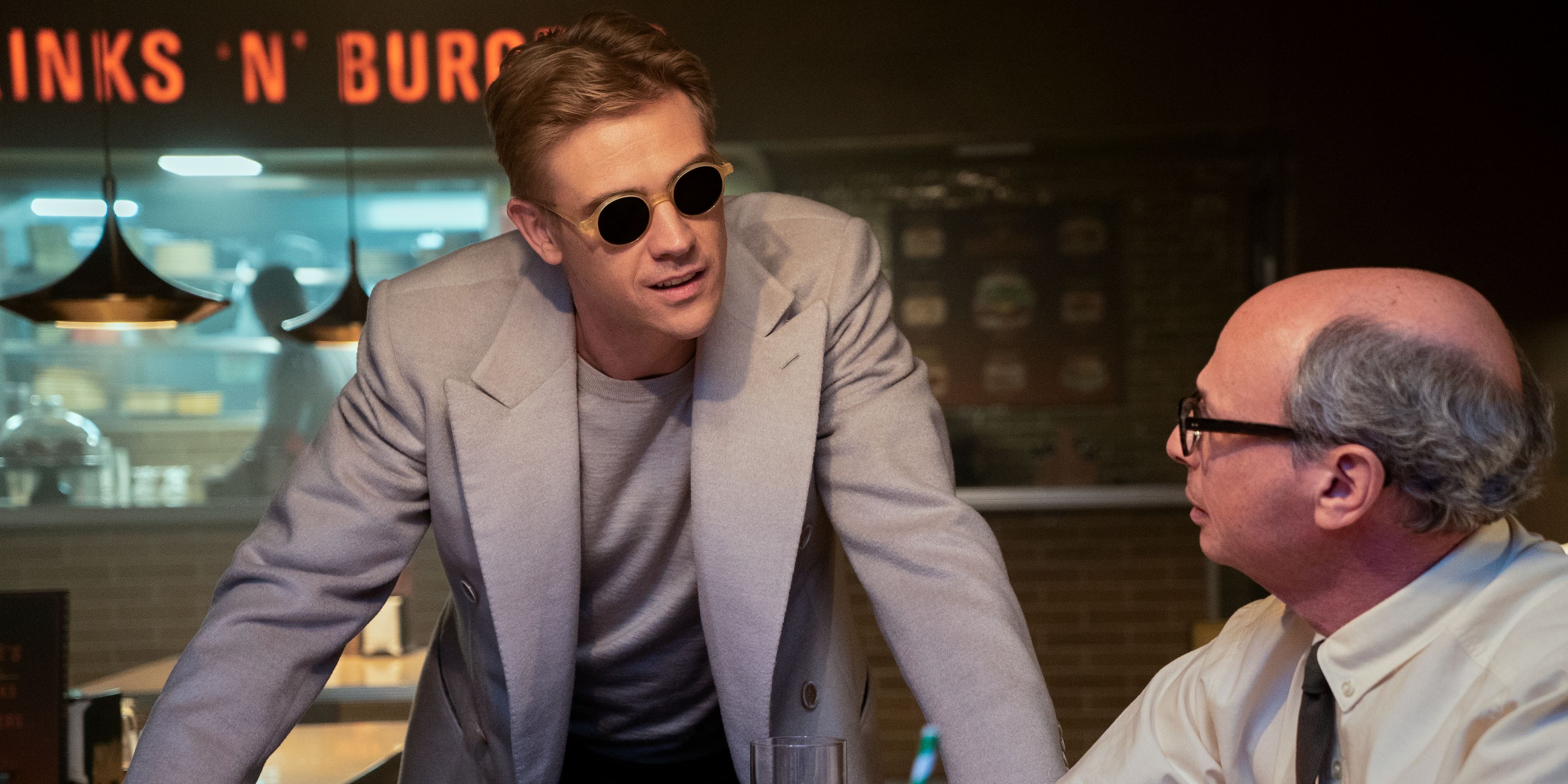Conversations around adaptations as big as Netflix's The Sandman series tend to be dominated by the idea of "faithfulness," which is usually one of the least interesting ways to talk about them. It condemns the new work to living in the shadow of the old one, which has the unbeatable advantage of being 100% faithful to itself, instead of allowing both to benefit from being so deeply in conversation with one another. But, in The Sandman's case, faithfulness offers a useful lens through which to view the successes and failures of this enterprise. While some structural and character changes were deemed necessary, there are lengthy stretches that seem to recreate scenes from Neil Gaiman's comics word-for-word, or bring certain panels to life with sometimes startling exactitude. Many of these moments feel as alive as they do on the page — news that is likely to delight many an anxious Sandman fan. Those that don't, however, might be better understood in relation to the source material than when considered solely on their own terms.
The Sandman begins with a mistake: In 1916, occultist Sir Roderick Burgess (Charles Dance) and his followers enact a ritual intended to capture Death, and find themselves having trapped Dream (Tom Sturridge) instead. Also known as Morpheus, this primordial being is one of the Endless, and the personification of all dreams and stories. Still, he is held captive by mortals, first the blowhard charlatan and then his meeker son, for 106 years, gaining his freedom in the year 2022. The narrative from there has primary strands, built around certain tasks Dream must accomplish as he retakes control of his kingdom, the Dreaming. It is also somewhat episodic. Characters are picked up, explored, and put back down again. Small, meaningful vignettes are told from beginning to end in however much runtime is needed. The one being that connects them all, even if not always in the role of protagonist, is Morpheus, whose time confined on Earth has prompted him to consider changing how he approaches his existence.
Episodic storytelling is in the nature of serialized comics and the source material's willingness to shift its title character into the margins when necessary is one of its greatest strengths. TV is also episodic by nature, but watching The Sandman, it feels as if there was a good deal of hand-wringing over how the piecemeal narrative would translate. The Corinthian (Boyd Holbrook), a horrific but deceptively charming nightmare who has escaped to the mortal world, has his already meaty role expanded to position him more firmly as the season's primary villain. When Lucifer (Gwendoline Christie), whose time is brief at this early stage, is moved on from, the show practically screams that this character will come back in future seasons. The series employs a great deal of cross-cutting within episodes, allowing different story strands to develop simultaneously and feel connected before they eventually collide. These are features typical of today's TV, but the story chafes in its new structure. Ironically, in spite of all these efforts to reshape The Sandman to fit this medium, this series is also most successful when at its most concentrated. Episodes 5 & 6, which are both more limited in scope and far less fractured, are clear standouts that will be enough for many The Sandman devotees to chalk this adaptation up in the win column.
And they are not the only reasons to consider the series a win, as this show's casting is especially strong, both when considered as an adaptation and as something that must stand on its own. Holbrook gives a compelling villain performance that makes the Corinthian's increased screen time very worthwhile, while David Thewlis flexes his ability to have a viewer hanging on his every gesture as the inscrutable John Dee. Vanesu Samunyai's likability makes it easy to root for Rose Walker as she essentially takes the reins in the show's back half, while Dance and Christie inject memorable presence to their contained roles. Kirby Howell-Baptiste as Death, Mason Alexander Park as Desire, and Stephen Fry as Gilbert all feel like perfect encapsulations of the essences that existed on the page. These characters all handle the transition from comic to television series well and thrive in their new environments.
Dream, however, struggles, and that's less the fault of Sturridge than the show's decision to fully humanize his look. Broody, distant, and resistant to change, the King of Dreams is a difficult character to latch onto at first, and that connection comes with time. But it is crucial that the viewer accepts him as an immortal being of tremendous power, particularly because the story will then undermine that power in various ways. The comics have his stylized design and even unique speech bubbles to communicate that, and while he is supposedly able to walk down a street without turning heads, his baseline inhumanity always remains visible. Sturridge's vocal performance works to create the same effect, but when he's standing there with a Zoolander-esque pout looking just like every other human being, it's hard to take him that seriously. The stakes feel much lower than they should when another character chooses to challenge his authority. As a result, the first few episodes of The Sandman might struggle to keep ahold of viewers who don't already know what's on the horizon. Those who stick it out will be rewarded with a stronger back half, but the show has yet to express a clear perspective on the work it's adapting, and a potential season 2 would benefit from some of the formal and creative risk-taking that made Gaiman's original work so special in the first place.
All 10 episodes of The Sandman season 1 is now streaming on Netflix. The show is rated TV-MA for sex & nudity; violence & gore; profanity; alcohol, drugs & smoking; and frightening & intense scenes.



